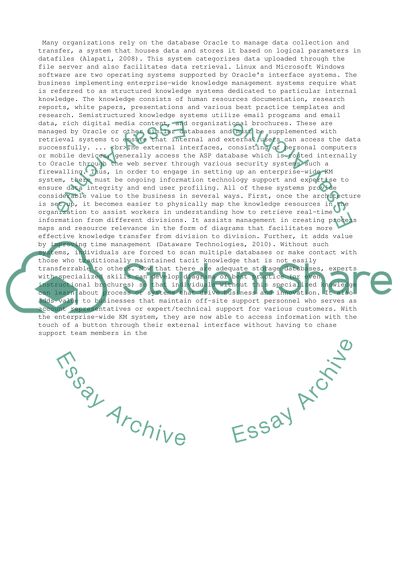Cite this document
(“Enterprise-Wide Knowledge Management Systems and their Usage in Essay”, n.d.)
Retrieved from https://studentshare.org/management/1455462-enterprise-wide-knowledge-management-systems-are
Retrieved from https://studentshare.org/management/1455462-enterprise-wide-knowledge-management-systems-are
(Enterprise-Wide Knowledge Management Systems and Their Usage in Essay)
https://studentshare.org/management/1455462-enterprise-wide-knowledge-management-systems-are.
https://studentshare.org/management/1455462-enterprise-wide-knowledge-management-systems-are.
“Enterprise-Wide Knowledge Management Systems and Their Usage in Essay”, n.d. https://studentshare.org/management/1455462-enterprise-wide-knowledge-management-systems-are.


